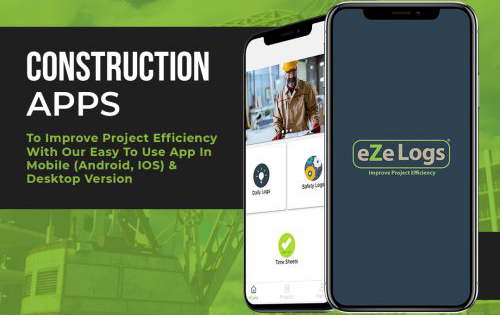Responding to Requests for Proposals (RFPs) from major public infrastructure organizations isn’t just about submitting a clean, compliant document.

It’s about understanding institutional priorities, anticipating procurement triggers, and delivering clarity across multi-phase capital programs. For contractors, designers, and technology partners bidding into billion-dollar programs, the RFP response process has become a competitive landscape in its own right—requiring rigor, foresight, and infrastructure-specific expertise.
Early Intelligence Gathering as a Strategic Advantage
Most winning proposals aren’t built the day the RFP drops. They begin months earlier—through public pre-solicitation notices, market soundings, stakeholder briefings, and design-bid-build forecasts. Public agencies, especially at the state or municipal level, often follow a pattern of advanced outreach due to open records laws and budget cycle reporting. Successful firms are tuned into agency planning commission meetings, capital improvement programs (CIPs), and prior-year procurement behavior.
Firms working with government transportation agencies or transit organizations benefit by engaging in non-committal dialogue during the pre-RFQ phase. Attending pre-bid meetings is just the baseline. More mature contractors start by mapping the timeline between the agency’s capital plan authorization and expected procurement windows, often identifying when scope drafts are circulating among internal reviewers before formal advertisement.
Proposal Structuring that Mirrors Agency Logic
Procurement teams inside public infrastructure agencies are not always construction professionals. Often, reviewers come from procurement, compliance, or legal divisions. They are scanning for completeness, internal consistency, and alignment with their own organizational breakdown structure (OBS).
Winning proposals are not structured around a contractor’s org chart—they’re structured around the agency’s capital program logic. For example, if the New York City Department of Design and Construction (DDC) uses a phased milestone billing structure, proposals that reflect that same phasing—rather than generic project stages—will read as intuitive and aligned.
This approach includes aligning section headers, terminology, and budget rollups to the agency’s own reporting formats. Instead of renaming “Final Design” as “Phase III Execution,” the proposal should match language from the agency’s own procurement documents to avoid ambiguity or misalignment during scoring.
Scoring Criteria Deconstruction and Evidence-Based Narrative
RFP responses for infrastructure programs are often scored against a weighted rubric. But beyond the public rubric, experienced firms reverse-engineer prior awards to understand how actual scoring tends to behave. An RFP may weight “project approach” at 30%, but in practice, scores diverge significantly on safety planning or stakeholder management—especially if those were pain points in past programs.
For instance, if an agency like Caltrans has struggled with change-order volume on recent highway widening contracts, a proposal that outlines early change detection workflows—along with a sample change-order triage log—will outperform a general narrative about change management. The more evidence, the better. Certifications, screenshots of past dashboards, and implementation schedules turn abstract promises into grounded deliverables.
Risk Transfer Positioning and Language Precision
Government RFPs are increasingly focused on risk management and appropriate risk allocation. Generic language like “we will mitigate project risk using proven best practices” no longer passes scrutiny. Infrastructure owners are looking to see where proposers draw the line between shared risks and accepted liabilities—and how they handle those operationally.
For example, in responding to a design-build-finance-operate (DBFO) RFP, top-tier firms will explicitly state their approach to permitting risk, utilities relocation risk, and unforeseen conditions. “Our team assumes responsibility for utility coordination through SUE Level B mapping and early utility stakeholder workshops” reads differently than vague statements about “coordinating with stakeholders.”
Where public owners are leveraging P3 structures or delivery innovations like progressive design-build, proposals should include clearly worded positions on milestone responsibility, contingencies, and downstream design authority—showing that the proposer understands not just the project, but also the owner’s preferred delivery model.
Staffing Plans with Embedded Institutional Knowledge
Staffing proposals aren’t just about resumes. Infrastructure owners often expect staffing plans to show embedded knowledge of agency workflows, approval cycles, and digital tools. Having a construction manager who knows Primavera P6 is fine. Having a scheduler who knows how the Port Authority of New York and New Jersey uses P6 activity codes to trigger invoice eligibility is different.
Incorporating staff who have previously worked within or adjacent to the procuring agency often provides a strategic edge. These individuals understand how internal review processes work, what documentation gets flagged, and which engineering details tend to stall project momentum. Proposals that highlight this embedded expertise—without violating conflict of interest guidelines—signal reduced onboarding risk and faster project start-up.
Digital Delivery Readiness and Systems Integration Proof
With many public agencies shifting toward BIM, digital twins, and integrated data environments, proposers are now expected to demonstrate compatibility—not just in philosophy but in tooling. Agencies managing large capital programs want to know: Can this contractor ingest our model formats? Can their systems talk to our EPRM or asset registry?
Responses should specify supported formats (e.g., IFC, COBie), prior integration examples with platforms like Bentley iTwin or Autodesk Construction Cloud, and how information will flow between design, construction, and handover. A workflow diagram showing how submittals are managed through the owner’s PMIS or how QA data is fed back into an asset database offers credibility.
Agencies like LA Metro are increasingly requiring open data protocols and standardized tagging structures to ensure that O&M teams can work with as-built models post-completion. Responders who provide a plan for this—along with sample metadata structure or field tools—position themselves well.
Compliance Accuracy and Administrative Cleanliness
No matter how strong a technical narrative is, administrative sloppiness derails submissions. Many public infrastructure agencies operate under rigid procurement constraints—where even a missed signature or incorrect file naming convention can disqualify a response.
Winning teams treat the compliance matrix as sacred. Every requirement is mapped, tracked, and double-checked by a compliance officer separate from the technical writers. Volume naming, page limits, font size, and digital signatures are validated through a pre-submission checklist. For digital submissions, file structure is tested in mock uploads to confirm browser-based form acceptance.
In some cases, firms even assign a compliance liaison who corresponds with the procurement officer during the Q&A phase—ensuring that ambiguous requirements are clarified early and not left to interpretation.
Also Read:
Safety First: Enhancing Toolbox Talks with AI-Powered Safety Management in Ezelogs
Smart HR for Construction: Boosting Payroll Efficiency with Ezelogs’ AI-Enabled HRM Tools
Compliance Made Easy: How AI-Enabled Certified Payroll in Ezelogs Simplifies Regulatory Reporting
Centralizing Your Data: The Power of Ezelogs’ Product Data Sheet Library for Faster Submittals
Voice-Activated Efficiency: Transforming Construction Management with Ezelogs’


